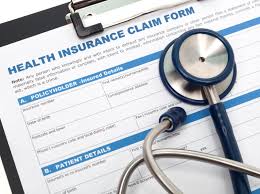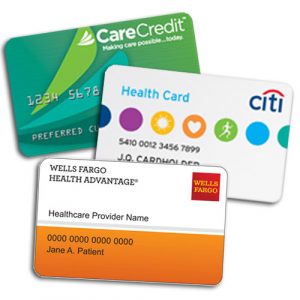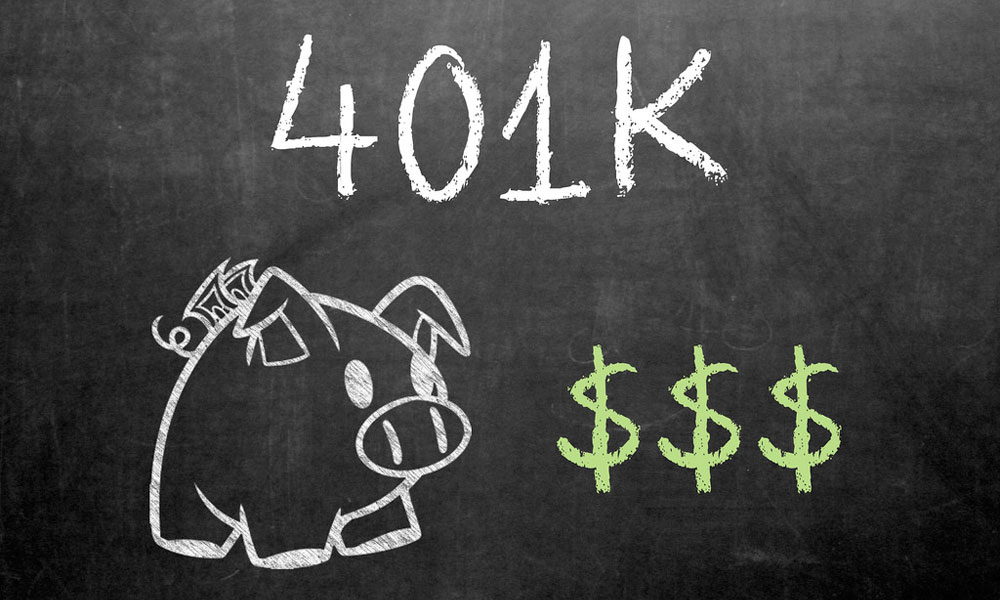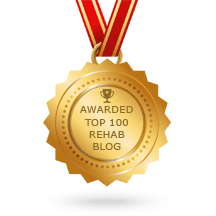
Here’s the truth: high-quality residential addiction treatment is expensive.
Factor in a month’s worth of round-the-clock medical supervision, plus mental health care from compassionate professional counselors, plus clean and comfortable accommodation and fresh, healthy food … and the total adds up fast.
But, rest assured - there are many options to get the help you need.
The good news is that there are many ways to pay for a quality addiction treatment program … even if your insurance doesn’t cover all of the costs.
Focus on finding the best fit rehab first, then figure out how to pay for it. Check out choosing the right residential addiction treatment program for a step-by-step approach to help you make the best informed decision.
Don’t default to the least expensive program just because it’s what your insurance covers. An inexpensive program is no bargain if you leave the same way you came.
When you find a program that meets your needs but seems out of reach financially, don’t give up. There are ways to get creative with financing, which we’ll outline below.
How to Pay For Rehab Costs
The primary options for paying for the addiction rehab you need include:
- Health Insurance
- Healthcare Loans
- Health / Medical Credit Cards
- Home Equity Loan
- Retirement / 401(k)
- Friends and Family
Health Insurance
Does insurance cover rehab costs?
The simple answer is yes, most do cover rehab and addiction treatment.
 You’ll have to check with your individual provider, but virtually all private insurance programs include some benefit for drug or alcohol rehab. This includes outpatient and inpatient residential treatment.
You’ll have to check with your individual provider, but virtually all private insurance programs include some benefit for drug or alcohol rehab. This includes outpatient and inpatient residential treatment.
ObamaCare (Affordable Care Act) included substance abuse disorders as one of their 10 elements of "essential health benefits." In other words, all the policies sold through the Health Insurance Exchanges must include coverage for addiction treatment costs.
In addition, the Mental Health and Addiction Parity Act of 2008 requires insurance companies to provide mental health and substance abuse treatment benefits that are comparable to the "medical and surgical care" that are provided under the same policy.
So make sure you understand what your health insurance covers … but don't make your decision solely on that basis. Most rehabs work with most established private insurance carriers, but the percentage of rehab cost covered by your insurance will likely vary. The amount or percentage of rehab covered by insurance varies according to whether the rehab is in- or out-of-network, the private pay price of the rehab, deductibles, and other factors.
12 Step programs are the de facto standard in the addiction treatment; however, these programs not very effective - demonstrating only about a 5-10% success rate, according to Harvard Medical School professor and researcher Dr. Lance Dodes. Though it has helped people, its overall recovery rate is low while the risk of relapse is high.
Insurance companies want to keep costs down, so a typical in-network program is large, institutional, and 12-Steps based. Amenities tend to be modest. But more importantly, individual counseling hours are kept at state minimum levels, which are almost always inadequate in our experience.
In general, evidence-based addiction treatment centers are often out-of-network.
Why?
Because insurance companies generally aren’t willing to pay for a significant number of professional therapy hours.
It may be tempting to go with a low cost addiction rehab…but that’s no bargain if it doesn’t help you to recover.
You don’t want to waste your time and risk your long-term sobriety on a program that won’t deliver substantive treatment.
Finally, also remember that the best treatment programs will go to bat for you, working with your insurance to help you get the coverage you need. (That’s what we do!)
Healthcare Loans
There are specialized companies that provide healthcare loans to cover rehab costs.
Often treatment centers have relationships with specific healthcare lending companies to help their participants pay for treatment.
Here's how it works:
- You apply for addiction treatment financing for the amount that you need
- If approved, the healthcare lending company pays your rehab directly on your behalf
- After you've completed rehab, you repay the healthcare loan in monthly installments, just like a car loan or a home mortgage.
Here are some of the benefits of reputable addiction treatment financing firms:
- Longer terms for lower monthly payments
- No impact on your credit
- Many times little or no collateral required
- Many times come with no prepayment penalties
- Fast & easy loan inquiry process
- 100% Confidential
Two popular providers are:

We've partnered with Prosper Healthcare and think they provide great options and support for our participants.
Health / Medical Credit Cards
Many major financial institutions, such as Wells Fargo, have health credit cards. Check with your bank to see if they have such an offering, and what types of treatment are eligible.

How does a medical credit card work? How are they similar to regular credit cards?
- When you use a health credit card, you're borrowing money from a banking institution to pay your healthcare treatment provider. These credit cards require the same type of credit check you'd encounter when you sign up for any other credit card.
- Medical credit cards may only be used for medical, health care expenses. They cannot be used for everyday expenses, such as groceries.
- Medical credit cards only work with treatment providers who accept health care cards, so check with the provider first to ensure that they accept this form of payment.
- There is typically a deferred interest period; it varies from card to card. Be aware of the terms here; deferred interest means that if the balance of the card isn’t paid in full by the end of the agreed-upon payment period, the entire amount of accrued interest comes due at once.
- Pay attention to interest rates; look for promotions with lower rates and longer payment terms. Consider using a regular credit card as well; many will offer 0% interest for a year after you open your account.
- However, know that many addiction treatment programs do not accept credit cards as a form of payment, so you may need to secure an alternate form, such as a credit card convenience check. Ask your treatment provider which forms of payment they accept.
Examples of Health Care Credit Cards:
- Wells Fargo's Health Advantage Card
- CareCredit (recently acquired Citi Health)
- AccessOne Medical Credit Card
Home Equity Loan
You can also get a home equity loan to pay for rehab.
Many people have built up equity in their home, either through property and home value appreciation, years of paying down a mortgage, or likely, a combination of both. Home equity is defined as the value of your home if you were to sell it, less the amount you owe on your mortgage.
For example, if your home can be sold for $500,000 and you owe $250,000 on your mortgage, your home equity is $250,000 ($500,000 - $250,000).
Virtually all banks and financial institutions will then consider you for a loan up to 70-90% of your home equity.
In addition to the equity you may have in your home, banks also consider your credit score before deciding to lend.
Alex Shekhtman, mortgage broker at LBC Mortgage in Los Angeles, says that banks are still weary from the 2008 housing crash.

“If you don’t have good credit or you owe a lot already, it’s going to be more challenging to get a loan from one of the big banks,” Shekhtman says. “Banks lost a lot of money during the recession, and now they’re much more careful about who they lend to.”
A credit score above 700 most likely will qualify you for a loan, as long as you meet the equity requirements. Homeowners with credit scores of 621 to 699 might be approved, but most likely at higher interest rates.
Homeowners are entitled to a free credit report every year from each of the three main credit-reporting agencies:
- Experian
- TransUnion
- Equifax
So in our example above, assuming you have a qualified credit rating, 80% of $250,000 of home equity (250,000 * 0.8) is $200,000.
You can use this money for anything, including paying for rehab.
Retirement / 401(k)
Many people have built up savings in their 401(k) retirement accounts. These of course are set aside to be used for retirement, and are generally available for these purposes starting at age 59 1/2.
But for certain situations, the funds are available before age 59 1/2.
There are 2 ways to access your 401(k) money before age 59 1/2:
- Loan for medical expenses
- Hardship withdrawal
A loan is almost always the better choice, particularly after the December 2017 tax reform, because the new tax law liberalizes loan repayment rules.

You can borrow up to $50,000, or half the balance in your account, whichever is less, from a 401(k) or similar workplace plan like a 403(b) or 457 plan. You then gradually repay the money, plus interest, to your own account.
Historically, 90% of borrowers have repaid 401(k) loans, according to a Pension Research Council study.
If you leave a job, you typically had to repay the loan in 60 days or it would count as a distribution and be subject to income taxes and the 10% early withdrawal penalty.
The new law, which applies to loans taken after Jan. 1, 2018, provides those who leave a job a little more time to repay than before. When you leave a job, you have until October of the following year (the due date of your tax return on extension) to put the money back into your 401(k) or an IRA or a 401(k) at a new employer. By paying the loan back, you avoid the tax hit and preserve your retirement funds.
By contrast, if you take a hardship withdrawal, you can’t repay the money to avoid a tax hit.
Though terms vary, out-of-pocket medical expenses such as residential addiction treatment typically qualify for the hardship withdrawal. Read more about the details at the Financial Industry Regulatory Authority’s 401(k) loans page.
If you balk at the thought of taking funds from your retirement savings or your home, ask yourself: If I don’t address my addiction now, what will my quality of life look like in retirement? In the extreme case, will I even be around to enjoy retirement?
So having more money in your retirement fund doesn't count for much if you're not around to enjoy it.
Your future self - not to mention your loved ones! - will thank you.
Friends and Family
Last by certainly not least, consider borrowing money for addiction treatment from trusted friends and family.
While it may feel uncomfortable to ask for a loan, it might be your best option.
Often friends and family are invested in your health and well being and want to see you recover.
If you borrow money from a friend or family member, set up a loan in such a way as to safeguard the relationship. Get the terms in writing and plan a realistic payment schedule that works for both parties.
Our experience is that over 50% of our participants rely on this method to help pay for rehab.
It works.
Make The Right Choice in Addiction Treatment
If the cost of addiction treatment is more than you expected, don’t let that stop you.
Instead, resolve to figure out a way to make it work. Reframe this challenge as the starting point for your new life, rather than a roadblock.
We often hear from many people who say, “The Clearing is my dream recovery program … but I can’t afford it.”
We do our best to challenge that thinking, to help people get creative and resourceful.
Why?
Because whether or not they choose to join us for our program, it’s important that they free themselves from the limiting beliefs that contribute to addiction ... one of which is, “I can’t get the help I need.”
We understand that it may feel like a big leap for you to choose a high-caliber treatment program. Getting the help you need might be a real stretch: mentally, emotionally, and financially.
But you’re not a victim; you’re a creator.
You’re the one in the driver’s seat of your own reality.
And we find that once you make a firm decision - I’m going to do what it takes to get the treatment that I need - then all kinds of possibilities open up.
--
Related Resources
Worksheet: Are You Ready For Inpatient Treatment?
Worksheet: Choosing A Rehab That's Right For You
If you'd like to learn more about our non 12-step rehab and the approach we take at The Clearing, check out our free eBook on Healing Underlying Core Issues.


